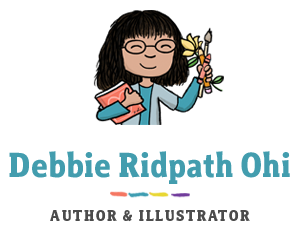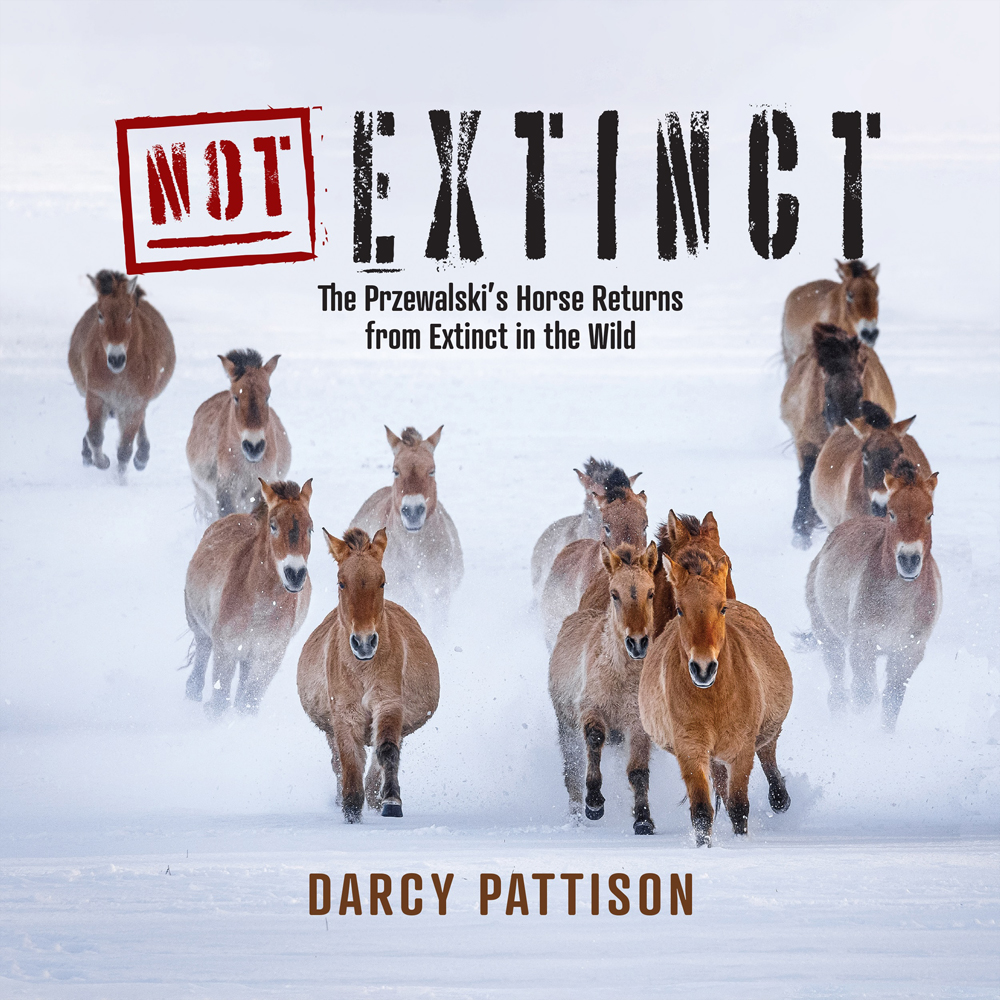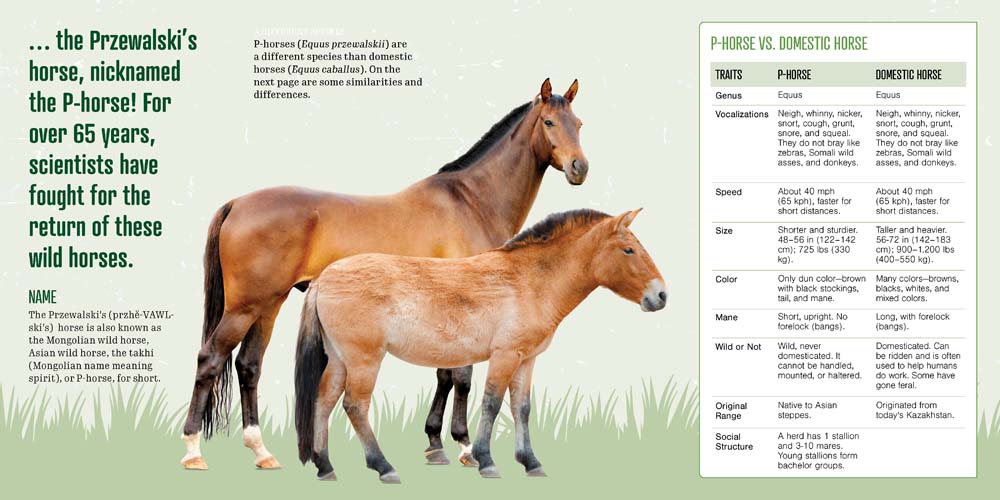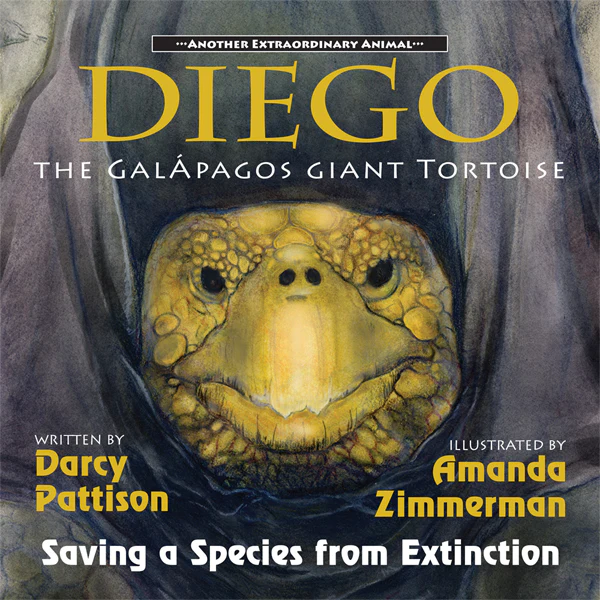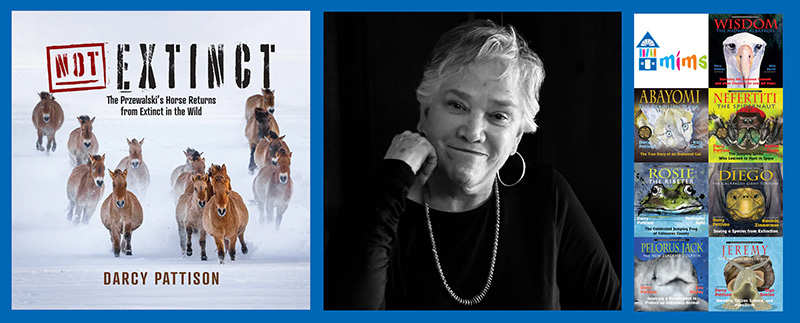
Children’s books by author Darcy Pattison have received starred PW, Kirkus, and BCCB reviews. Awards include an Irma Black Honor, five NSTA Outstanding Science Trade Books, two Eureka! Nonfiction Honors, two Junior Library Guild selections, two NCTE Notable Children’s Book in Language Arts, and a Notable Social Studies Trade Book. You can find out more about Darcy on Bluesky and Facebook.
Title: NOT EXTINCT: The Przewalski’s Horse Returns From Extinct In The Wild
Author: Darcy Pattison
Photo cover credit: Miroslav Bobek
Publisher: Mims House
Designer: Sanja Jain
Publication date: July 8th, 2025
SYNOPSIS
In 1959, the international community came together to discuss the plight of the Przewalski’s horse, nicknamed the P-horse. The small population came from just 12 founding horses. Could they save the P-horse and return it to the wild? Or would it go extinct.
When animals are declared Extinct in the Wild, it’s rare for them to recover. This story covers over 60 years, and a loose network of international effort from scientists across the world. After decades of breeding efforts, they finally established wild herds in the native steppes of Mongolia and China. But then an extreme winter, a dzud, struck, killing 60% of the wild herds.
Photo-illustrated, this story follows the efforts to restore a vital species to the wild. The sixty-year effort has brought the P-horse from Extinct in the Wild to only Endangered. Still—it’s endangered! The story will continue to inspire the next generations to work to save species at risk for extinction.
The interview
Q. Tell us about your latest book for young readers, NOT EXTINCT.
In 2024, my husband and I were planning to go to Prague, Czech Republic to visit an exchange student who had lived with us for a year. I saw a newspaper article about the Prague Zoo releasing some wild horses in Kazakhstan. It was my first time to hear about the Przewalski’s (P-zhe-vawl-ski) horses, an endangered species. But I quickly learned more.
The P-horse, as they nicknamed, are the only wild horse left in the world. When we think of wild horses in the U.S., they are actually domesticated horses which have gone feral. But the P-horse, native to the Asian steppes, has never been tamed or domesticated. In the mid-1950’s they were considered Extinct in the Wild, with the only surviving P-horses in zoos or wildlife preserves.
Photo: Comparison of Domestic Horse and P-horse
That was enough information for me! I was in. I contacted the Prague Zoo and asked if I could visit and learn about their program to return the P-horse to the wild. We leaned over the fence to watch the P-horses running in their enclosure and learned about the difficult conservation efforts.
Later, I visited the Denver Zoo, which has a small herd of P-horses. The zoologist there took us behind the scenes, where we fed and touched the horses through a fence.
The result is Not Extinct: The Przewalski’s Horse Returns from Extinct in the Wild.
Q. What do you hope young readers will take away from your book?
Conservation of species is hard, hard, hard. This is my second book about an endangered species. In the first one, Diego: The Galápagos Giant Tortoise (illustrated by Amanda Zimmerman) I learned that it took the Ecuadorian and international scientists sixty years to bring back a tortoise species. But we did it–humans saved the species and returned them to their native island.
For the P-horses, conservation efforts have been ongoing for over 100 years. It was going well until a severe winter, called a dzud, hit. A dzud happens when there’s a dry summer that produces little grass, followed by a very harsh, cold winter. P-horses and other animals dig through snow to find food, but there’s no grass. They starve. That year, 60% of Mongolia’s livestock died, including 60% of the P-horse herds.
A bad winter can wipe out years of work! Scientists had overcome so many problems: money, politics, poachers, transportation, diseases, and so much more. But a dzud almost defeated them.
Sometimes, it feels like the wild is just too wild!
But scientists are determined. And somehow, they find a way to save species after species.
Ten years, twenty years, fifty years, or a hundred years–it takes a long time. It’s hard. But we–humans working together–can save species from extinction.
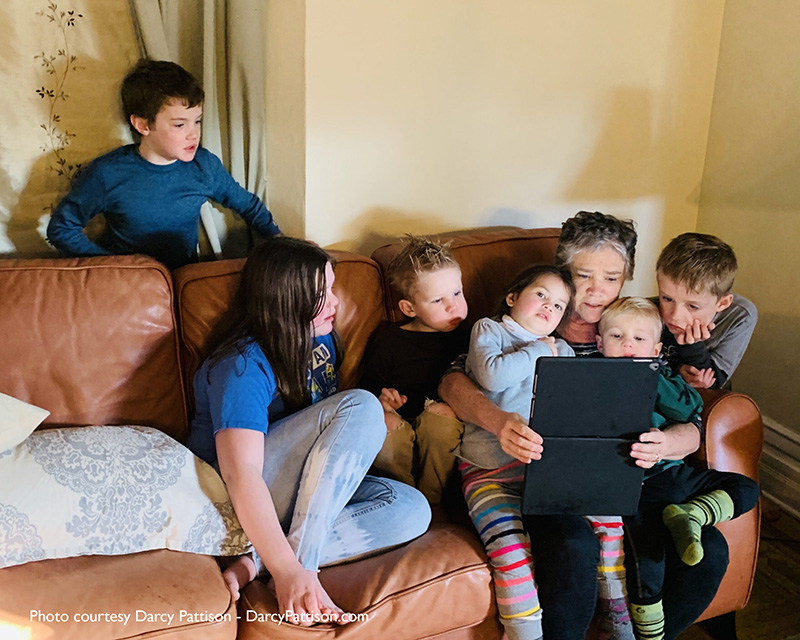
Q. What advice do you have for young creators?
Sometimes, the hardest things are the most valuable. Just like scientists work for decades to save a species, artists often practice their craft–writing or illustrating–for years before they find success. Don’t give up. The world needs you and your work.
Q. What advice do you have for older creators?
Don’t be afraid to seek out experts. I was scared to contact the Prague Zoo and the Denver Zoo, but I knew it was crucial to the success of the project. One friend said we have five magic words: I am writing a book. Abracadabra! Use that magic and ask experts for the information you need.
See more Interviews here as well as Advice For Young Writers and Illustrators.

